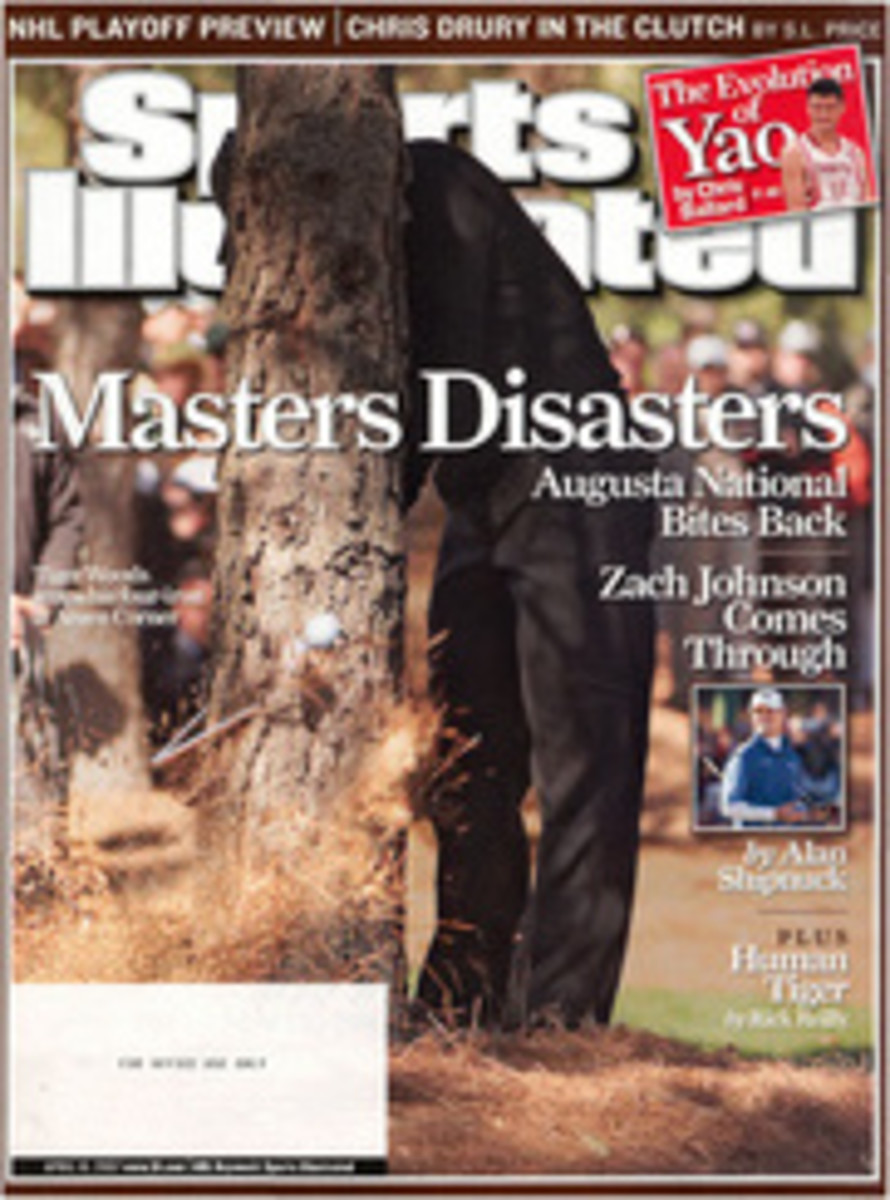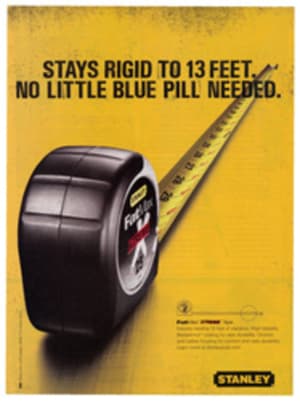
Old School
After his firstround in the 1984 Masters, Ben Crenshaw got in a car and drove 20 miles toAiken, S.C., and the relic of a course there, the Palmetto Golf Club. He parkedin the visitors' lot, an odd-shaped field of dirt and rocks, and walked over tothe sagging pro shop manned by Tom Moore, who finds gutta-percha balls on hiscourse after heavy rains. ¶ Crenshaw looked around. No dining room. No tenniscourt. No swimming pool. A Stanford White clubhouse, but not a big sprawlingbuilding like the one White designed for Shinnecock Hills, just a cozystructure that practically leaned onto the 1st tee. Crenshaw headed out,tumbling off the 1st tee and into the 19th century.
Nothing haschanged in the 23 years since. "It's pure golf," Crenshaw said lastweek. "Just golf. And so, so pure. The holes fit the landbeautifully."
Palmetto, foundedas a four-hole course in 1892, is a private club that opens its doors to thepublic one week a year, Masters week. For $750, a foursome can play a6,300-yard, par-71 course, all mounds and slopes and hollows, with solid-steeltee markers made from pieces of train rail. (You don't kick them more thanonce.) At Palmetto you're playing a course that has been shaped by HerbertLeeds, Alister MacKenzie, Donald Ross, Rees Jones and Tom Doak, among others.Since a Ramada Inn in Augusta was charging more than $400 a night for a singlelast week, paying $750 for a foursome to play the beguiling Palmetto courseseems a bargain. Bob Wood, who runs the Nike golf business, was a visitor lastweek, signing a poster with his name and a swoosh. Mark Russell, the PGA Tour'stournament director, was there too. For the modern golf executive, going toPalmetto is like taking some sort of ritual bath, a reminder of the game thatfirst sucked you in.
Palmetto's roots(the club's, not the tree's) are patrician. Aiken was a winter colony for richNortherners during a bygone time, and the names of the early members are out ofthe Social Register: Hitchcock, Whitney, Harriman, Byers, Grace (of thesteel-producing Graces). Also George Herbert Walker, progenitor of a famousgolf cup and, yes, two U.S. presidents. Now the club is populated by areapeople working regular jobs: plumbing contractors, engineers, the sports editorof The Augusta Chronicle. "If I can get in," John Boyette, that editor,said last week, "anybody can."
Rees Jones, whogets to Palmetto once a year, during Masters week, first played the course atthe invitation of an old friend, Bobby Goodyear, one of the few Palmettogolfers who is also a member at Augusta National. Jones suggested some changesto the course, mostly in the area of bunker restoration, and oversaw theproject. "I did the work for free because I love the place, and they haveno money," Jones says. One of the things he likes best about Palmetto isthat the members have no airs.
One year duringMasters week old Tom Moore squeezed in the Jones foursome in front of a groupof members.
"Who the hellare you guys?" one of the aggrieved golfers asked Jones.
"Well, that'sMichael Bonallack, who runs the R&A," Jones said. "That's DavidFay, who runs the USGA. That's David Eger, who runs the USGAcompetitions."
"Yeah--andwho the hell are you?"
Courses likePalmetto--where golf is simple, interesting, unmanicured and fast in everyway--can be found all over Scotland and Ireland. In the U.S. they aredouble-eagle rare. When you find those conditions in American golf, they'regenerally at an old-line club that the public can't sniff: Maidstone, on LongIsland; Newport, in Rhode Island; Sankaty Head, on Nantucket. "You findcourses like that where there are people who understand that scruffiness is atraditional golfing value," says Jones. "Where people are comfortableenough with who they are that they're not using their golf course as a statussymbol." The curse of modern golf, to Jones and not many others, is thateverybody tries to outdo everybody else. Augusta on TV has a lot to do withthat. Palmetto is immune to it.
Boyette oncebrought a relative from California to Palmetto. Boyette called out his lunchorder: a couple of dogs from Moore's hot-dog steamer, a couple of bags ofchips, a few drinks. No money was exchanged. The host explained how it worked.The California relative was perplexed: "The honor system?" He had neverseen such a thing.
One of thepleasures of Palmetto is that you can play to your handicap there. Onecrooked-hitting visitor last week was pleasantly surprised when he realized hehad played 36 holes with a single ball, even though you can hit driver on 14holes. There's only one pond on the course, and it's barely in play. Thefairways are generous, especially to righthanded slicers. There's really norough. But the bunkers are nasty, and each hole, pretty much, gets more andmore difficult the closer you get to the cup. Augusta National's the same way.The greens at both places were designed by MacKenzie. You can run your ball upto every green at Palmetto, and ladies of a certain age can hit those littleline drives that will skip along for 150 yards on Palmetto's firm fairways. Agolf course on which you can find your ball and play to your handicap? What aconcept!
In August 2005 anAiken native named Dale Burkhart, then 21 and competing in the PalmettoAmateur, played the first 14 holes in 44 strokes. The last four holes atPalmetto are hard by the parking lot, clubhouse, pro shop and driving range. Asizable group emerged to see if Burkhart, now a pro, could play the final fourin 15 or fewer strokes, to break 60, set a new course record and win the event.Burkhart made his putt for 59 on the last and looked up and took in the crowdfor the first time. "And there was Tommy Moore," Burkhart says,"sitting there, scratching his head." Moore never thought he'd see theday. There's nothing easy about Palmetto, especially the putting.
Moore is awonderful asset, a keeper of the flame. The club's board of governors plans tospruce up the circa 1900 pro shop, but the refurbishing wasn't at Moore'srequest. He's perfectly happy with it the way it is, cramped and dark andhomey. The shop houses a collection of old balls that he has found on thecourse, plus the various tributes to the many golfing luminaries who havepassed through Palmetto, which used to be a stop on the way for pros heading tothe Masters. Ben Hogan and Sam Snead and Byron Nelson played in a pro-am eventat the club that served as a Masters warmup.
Some of thedetails of those tournaments can be found in a club history published in 1992called Palmetto Golf Club: The First 100 Years. The club, maybe a mile or soout of Aiken's charming downtown and in a part of town known as the HorseDistrict, isn't going anywhere soon. The land is owned by a nonprofit group,the Whitney Trust. The club leases the land from the trust for a nominal fee,and the current deal expires in 2080.
In other parts ofAiken, and in and around Augusta, there are a bunch of fancy-pants countryclubs, often attached to housing developments with gates to keep track of who'scoming and going. During Masters week Phil Mickelson has practiced at one, SageValley, and Tiger Woods has stayed at another, West Lake. There's a new onenear Augusta, Champions Retreat, with 27 holes, nine by Gary Player, nine byArnold Palmer, nine by Jack Nicklaus. There are clubs in greater Augusta forwhich the initiation fee is $75,000. At Aiken it's $15,000. The greens fee fora member's guest is 50 bucks. There's great value to not having your course bebright green all year long. Keeping golf reasonable, for starters. That's howit is at Pacific Grove, a muni up the road from Pebble Beach, and in much ofScotland and in a few other places, including Palmetto. But if you haven't hadany exposure to Scottish golf, Jones says, "you probably won't getPalmetto."
Most weeks,Palmetto is quiet. Sixty golfers a day is busy. Masters week, it's a foursomeevery 10 minutes, the Masters-week guest fees almost ensuring that the memberswill never be hit with an assessment. But during Masters week Palmetto is doinggolf a service. The visitors there can go back to their home courses and spreadthe word: In golf, as in life, less can be more.
"It says inour charter that the golf course is established in perpetuity for the enjoymentof the members and their guests," Moore said early last week. Not forshowing off or torture or anything else--just enjoyment. Crenshaw said the samething another way: "Palmetto is just fun, start to finish, just so muchfun." Three days after his initial visit to Palmetto, Crenshaw won thefirst of his two green jackets. Fun week.
While Mooretalked the other day, the clubhouse TV was tuned to the Masters. Carnage city.Out on his links, there were golfers having a ball.
• Read more byMichael Bamberger at GOLF.com.
At Palmetto you're playing a course that has beenshaped by HERB LEEDS, ALISTER MACKENZIE, DONALD ROSS, REES JONES AND TOM DOAK,among others.
"There are people who understand that SCRUFFINESSIS A TRADITIONAL GOLFING VALUE," says Jones, who gets to Palmetto once ayear, during Masters week.
Palmetto used to be a stop on the way for pros headingto the Masters. BEN HOGAN, SAM SNEAD AND BYRON NELSON played in the pro-amevent at the club.
TWO PHOTOS
Photographs by Fred Vuich
TREASURE CHEST Opened in 1892, Palmetto sometimes yields vintage gutties (below) after a hard rain.
FOUR PHOTOS
Photographs by Fred Vuich
REAL SIMPLE For 25 years, Moore (left) has presided over a club that remains unpretentious despite its storied past.
PHOTO
Photographs by Fred Vuich
DESIGNER DIGS The Stanford White clubhouse hints at Palmetto's pedigree.
PHOTO
Photographs by Fred Vuich
BEN THERE Crenshaw escaped to Palmetto during the '84 Masters.

